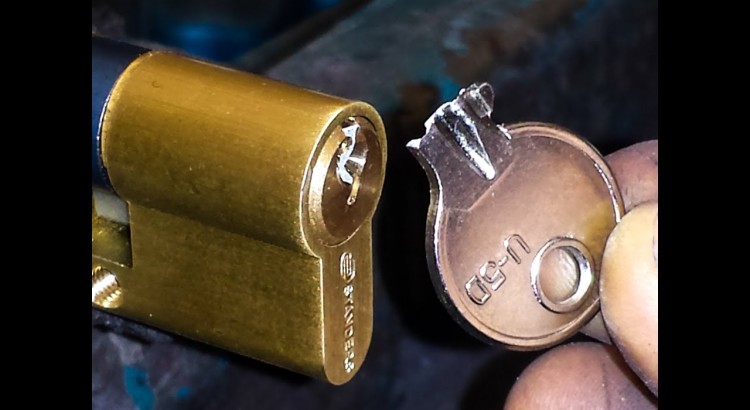Don’t freak out if a small piece of your key becomes inadvertently jammed in the lock. There are numerous inventive and simple ways to remove a broken key from a lock if you have extra keys. You may find inexpensive Lock Picking Sets online as well as some advice on how to extract a broken key from a lock in this tutorial.
Pinch the broken key out
Checking the alignment is the first step. The serrated or cut face of the key should only be removed from the lock when it is parallel to the top of the cylinder. Try rotating it 180 degrees in this instance. Because the bottom pins aren’t correctly aligned, which might happen if the retaining cap comes off, damaged keys occasionally won’t remove. Check to see if the key is still placed in the same spot. Next, try to squeeze the key out by pushing against the plug’s face with your fingers. Tip: While attempting to remove the key, push the plug in with the fingertip of your other hand.
Lubrication lock
If adjusting the alignment doesn’t solve the issue, a loose plug might not be the root of the issue. The most common cause of keys hanging on the tumbler pin is typically fresh, subpar keys. The extraction will then be made simpler in the following stage. Spray directly into keyholes and other small crevices to make it easier for keys to exit. Have a fresh rag on hand to mop up spillage. To unlock it, try swinging the broken key up and down rather than side to side.
Ice is the key
Did you know that ice can be used as an alternative method to remove your keys if they won’t swing freely? Here’s another simple and affordable fix. Applying ice to the key should cause it to shrink and make the key easier to slip out of the lock since the cold temperature of the ice causes the metal to contract. Simply place a piece of ice against the key’s head while it is wrapped in a paper towel to prevent it from dripping. Hold it down, wait a few minutes, then if required try shaking the broken key out once more.
Cleaning lock
If the aforementioned techniques were successful, it is crucial to keep in mind to routinely clean your locks. If the lock is not cleaned off, built-up dirt or debris over time may cause it to stop functioning correctly. In this situation, WD-40® serves as both your cleaning agent and your main lubricant. Apply the quick-acting solution to the key and keyhole, then re-insert the key into the lock a few times. Keep a clean bell handy to catch drips, don’t forget.
More lockpicking instructions can be found online at sites like barhomevip.com, where you can also purchase an inexpensive Auto Tool if you’re having problems.
